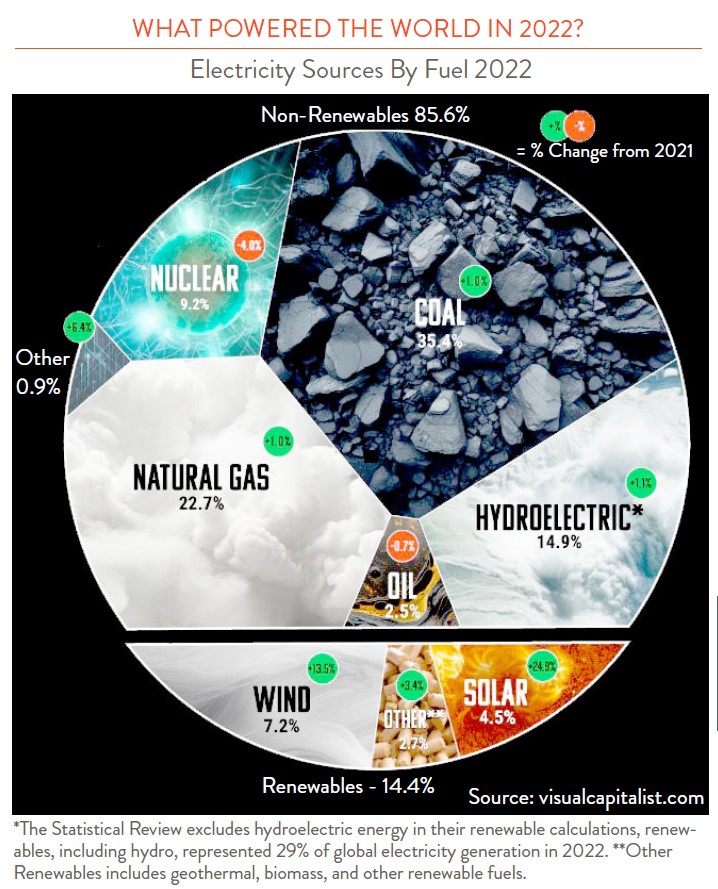The shift to electric vehicles has been impressive. In the first half of this year, approximately 14% of light vehicle sales globally were either Battery Electric Vehicle (BEV) or Plug-in Hybrids (PHEV). Leading the pack of adopters were a mix of Scandinavian countries like Norway, and China. U.S. car buyers are also warming to BEV/PHEVs. In the second quarter of this year, the category represented 16% of all light-duty vehicles sales.
The desire for a more environmentally friendly form of transportation drives most car buyers to consider going electric. This makes sense given that transportation is responsible for about one-quarter of the world’s greenhouse gas emissions. But exactly how “clean” are they? From a manufacturing standpoint alone, BEVs are generally less environmentally friendly than their gasoline powered counterparts. This outcome relates to the negative environmental effects associated with manufacturing and disposing the metals used in their lithium-ion batteries. But from a operating standpoint, BEVs have a clear advantage. In a 2021 study, The Wall Street Journal found, for example, that a BEV (in this case a Tesla) produced less than half the greenhouse gas emissions a comparable gas engine car over its lifetime given the nation’s then current average fuel mix. Where does this fuel mix stand today? Here in the U.S., 77% of our energy is now fueled by non-renewables which include coal (19%), natural gas (39%), and nuclear (18%). The chart here takes a look at electricity’s fuel mix on a global basis. Non-renewable sources account for just over 85% of the world’s electricity although this number drops closer to 71% if you eliminate hydroelectric. The bad news is that coal, which creates some of the highest CO2 emissions, still represents 35% of the globe’s fuel mix.

The good news is that the two primary renewable sources of energy, wind, and solar, have been growing at a fast pace while coal’s growth, even on a global basis, is stagnating. In 2022, a year when total global electricity generation grew 2.3%, renewables grew almost 15% while coal and natural gas each inched ahead just 1%. While near-term obstacles exist, the longer-term outlook for further renewable adoption remains favorable. Alternative energy projects, particularly in the offshore wind sector have recently suffered due to high interest rates, cost inflation, and still sticky supply chains. But longer term, the desire for cleaner and cheaper fuels, a renewed interest in energy independence and accommodating policy support remain powerful drivers. In their 2023-2024 Market Outlook, the International Energy Agency (IEA) forecasts that by the end of 2024, global cumulative renewable capacity will reach over 4,500 gigawatts (GW), a number equal to the total power capacity of China and the U.S. combined. The outlook for solar installations, both utility scale and smaller distributed systems, looks particularly strong given their continued cost advantages. Finally, keep an eye out for nuclear power to play a small but growing role in the globe’s energy mix. Several countries are reconsidering the technology due to its ability to provide stable, carbon-free power. China, for example, is adding 24 reactors to its existing 55 plants while India too is expanding its fleet. Here in the U.S., the first new nuclear plant in years should be up and running by early next year.
Meeting global greenhouse gas reduction targets will be a tall order. But the move toward cleaner electricity generation continues. This fact together with ongoing efforts to reduce toxic metals used in EV batteries and improve battery recycling should be good news to anyone considering a BEV or PHEV today.